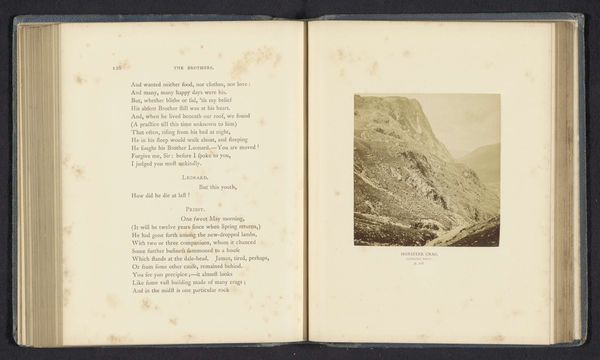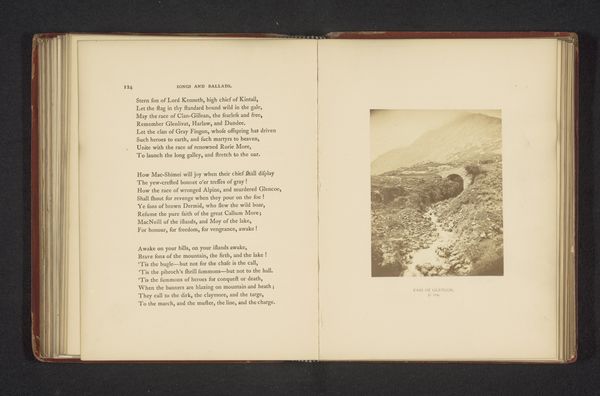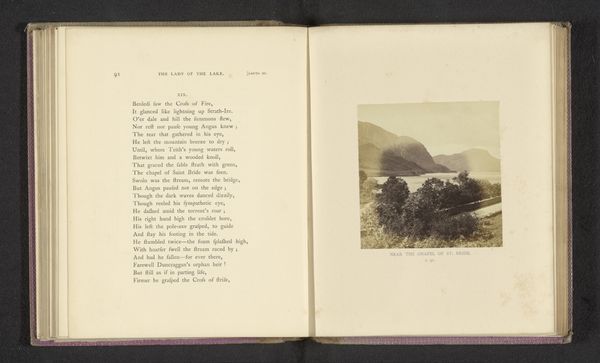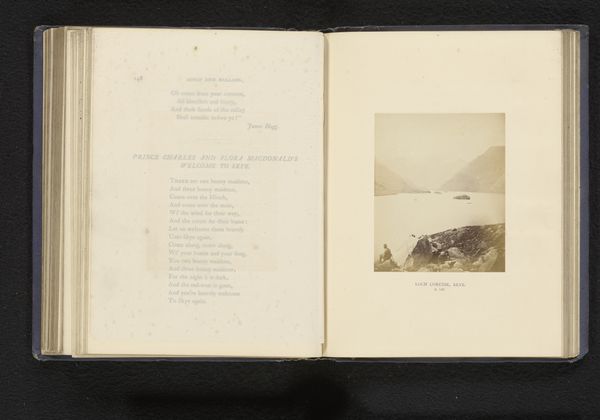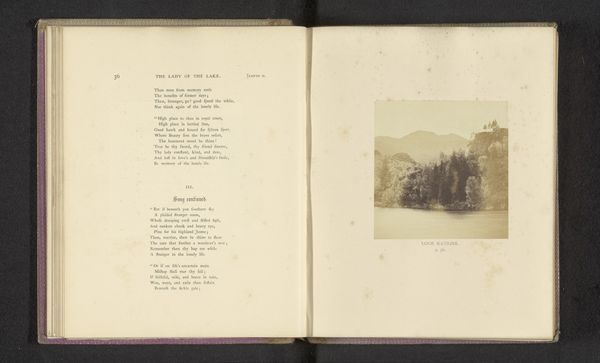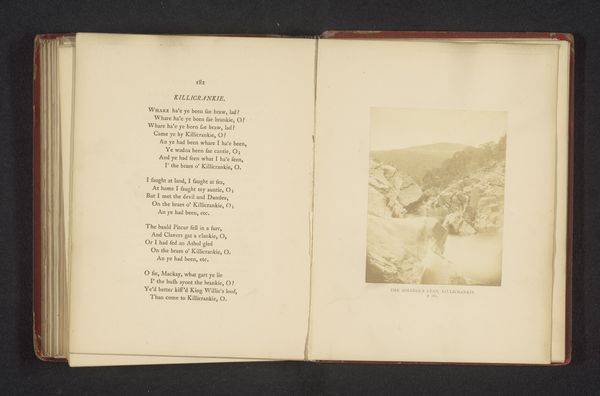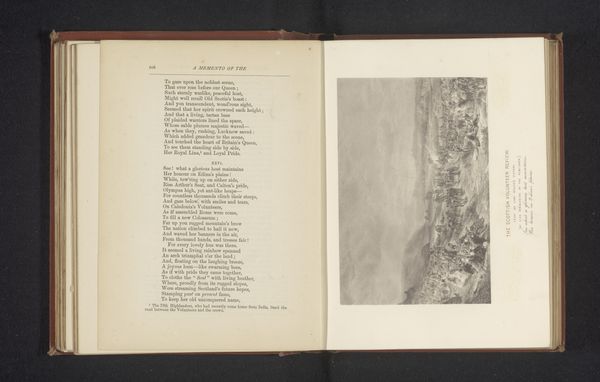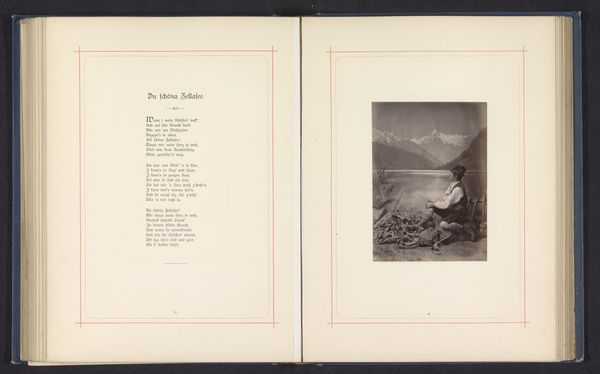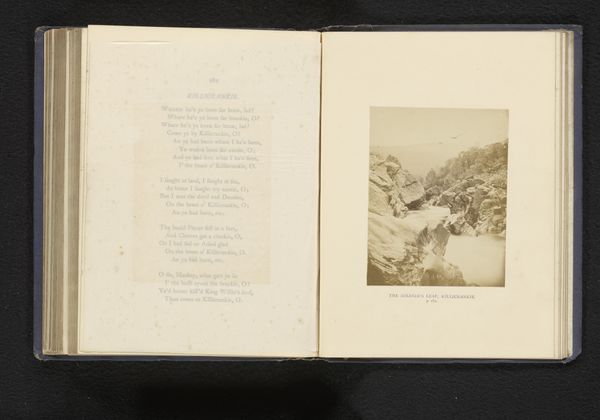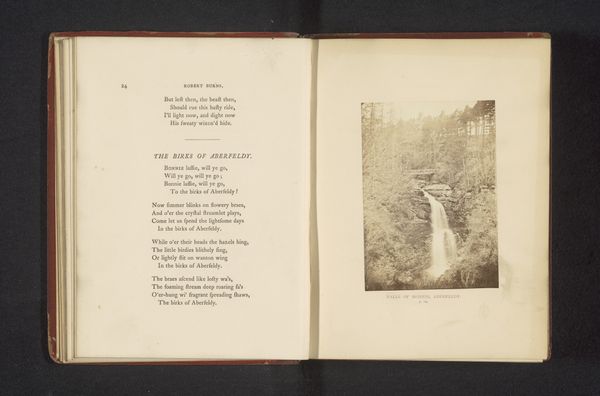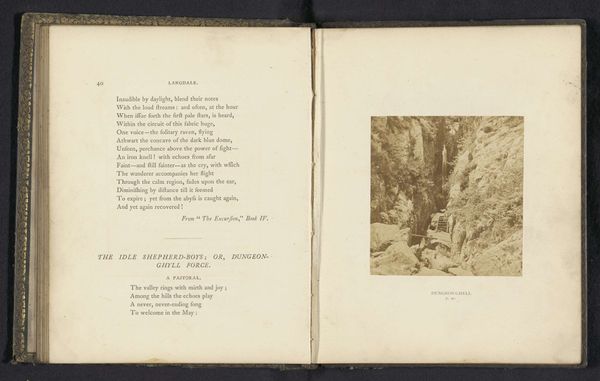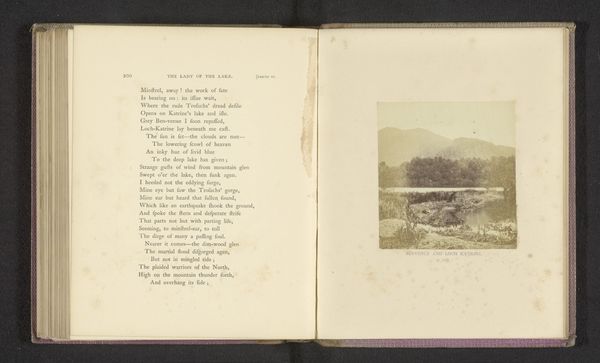
print, photography
# print
#
landscape
#
photography
Dimensions: height 93 mm, width 77 mm
Copyright: Rijks Museum: Open Domain
Curator: This image is titled "Loch Coruisk, Skye," a photographic print dating to before 1868, by Stephen Thompson. It appears within a bound book, facing a page of text. Editor: My initial impression? Melancholy, but somehow comforting. It’s got that windswept, isolated feel. Sort of whispers, "Come here to brood." Curator: Right, brooding! The print process itself, particularly in early photography, relied on light-sensitive materials—glass plates coated with emulsions that responded to light exposure. It was meticulous labor. Editor: Labor, yes! I see that quiet person perched on the rocks. Wonder what they’re thinking, feeling? I see that light just kiss the water. Beautiful! Maybe the person is enjoying that calm too? Curator: Well, beyond aesthetic considerations, early landscape photography played a crucial role in shaping perceptions of remote locations. Images like these often bolstered ideas of Romantic sublime. Note the printing process that gave a certain softness and how different shades make for different impressions. Editor: Romantic sublime...right, that striving to capture vastness. But for me, that term feels a bit... lofty. The quiet grandeur here, well, it makes me reflect. Maybe they’re trying to get over someone. Curator: Well, whether trying to forget a romance, one could say it has something to do with material consumption and distribution. Consider the album in which this image is bound: What did the labor of crafting the image represent, and for whom was the image displayed or consumed? What did it mean to experience a landscape like this mediated through photography? Editor: Good points! Thinking about its place *in* the book rather than just *as* an isolated photograph definitely opens things up. This tiny landscape image makes me want to chuck it all. Go live in a cabin. Learn to make my own paper, like they must have back then! Curator: Precisely! Recognizing those social contexts and considering what we learn by studying processes and the way people do work reframes our understanding of the image, of the place itself, even. Editor: Absolutely! It’s about layers. I started with just...mood. But you grounded it with materiality. Seeing art, feeling it. It’s not separate. It's history; it's present; it's connected.
Comments
No comments
Be the first to comment and join the conversation on the ultimate creative platform.
